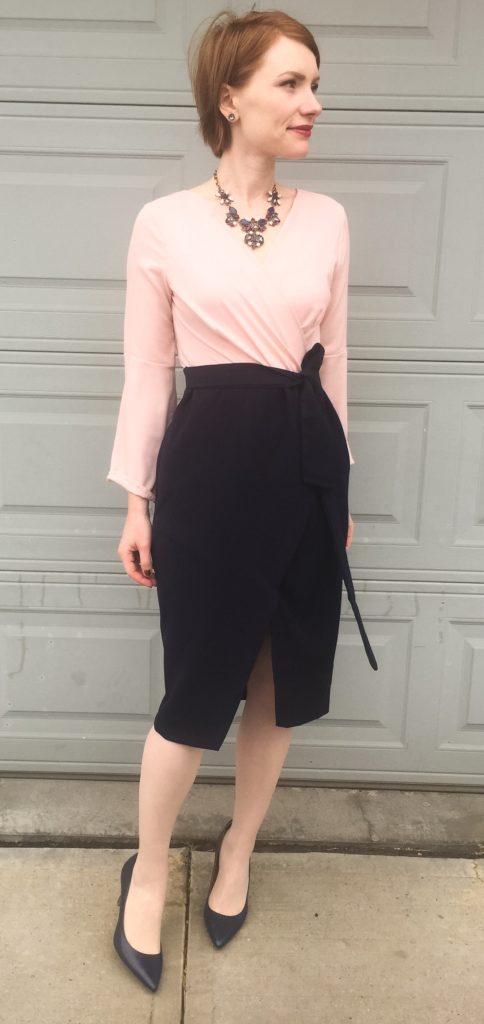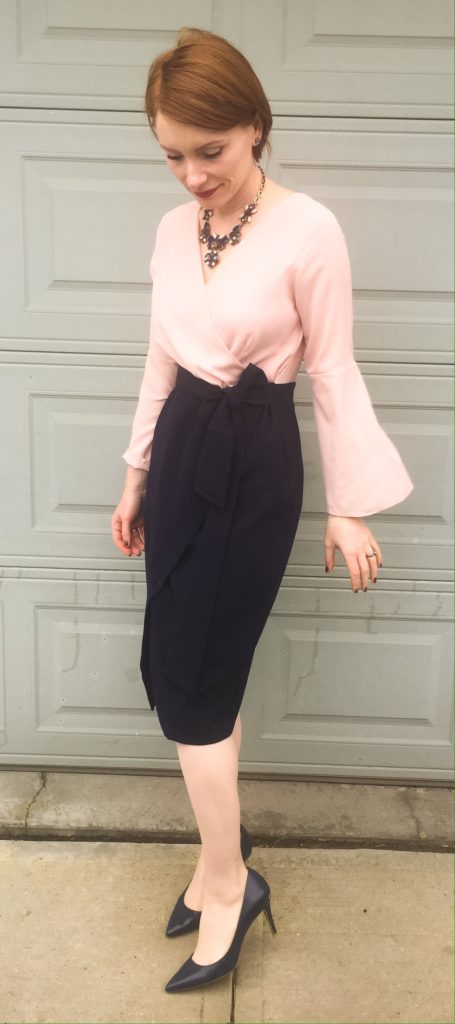
Soooo … clearly, I have not subjected this dress to the sleevectomy I previously discussed, yet. There is a stack of clothes I’ve been meaning to take to the tailor for minor alterations, this dress included, and I never seem to find time. It’s a 5 minute drive. You’d think it should be easy to manage but … nope. So bell sleeves it is, for a little while longer.
I didn’t do anything ground-breaking in putting together this outfit, which might make for a boring blog post, but makes for an easy morning routine. I kept things really simple and low key, with matching navy shoes and a navy & burgundy necklace. Burgundy is a perfect complement to both navy and blush — or the two together; actually, burgundy goes well with pretty much every colour I own. Oh, did I mention that I finally found the perfect navy pumps? Well, I did. It only took, what, 2 years? 3? They are Calvin Klein, and they’re pretty comfortable; I’d say they rank at least 3 consecutive-standing-on-my-feet-hours, which is pretty good for a 3-inch heel. There’s some gel cushioning happening there, for sure. I got my pair at Winners, because I’m wary of buying shoes online (I don’t trust sizing, even for brands I know), and I have been unable to find any decent navy shoes secondhand in all my years of looking. Based on past experience, CK shoes are really good quality-for-the-price if you can get them for $60 or less, which is what I paid for mine, and what you might pay at places like Zappos, 6pm and the like (if you’re American – sorry, Canadian peeps, but our online shoe-buying options are not as great).












